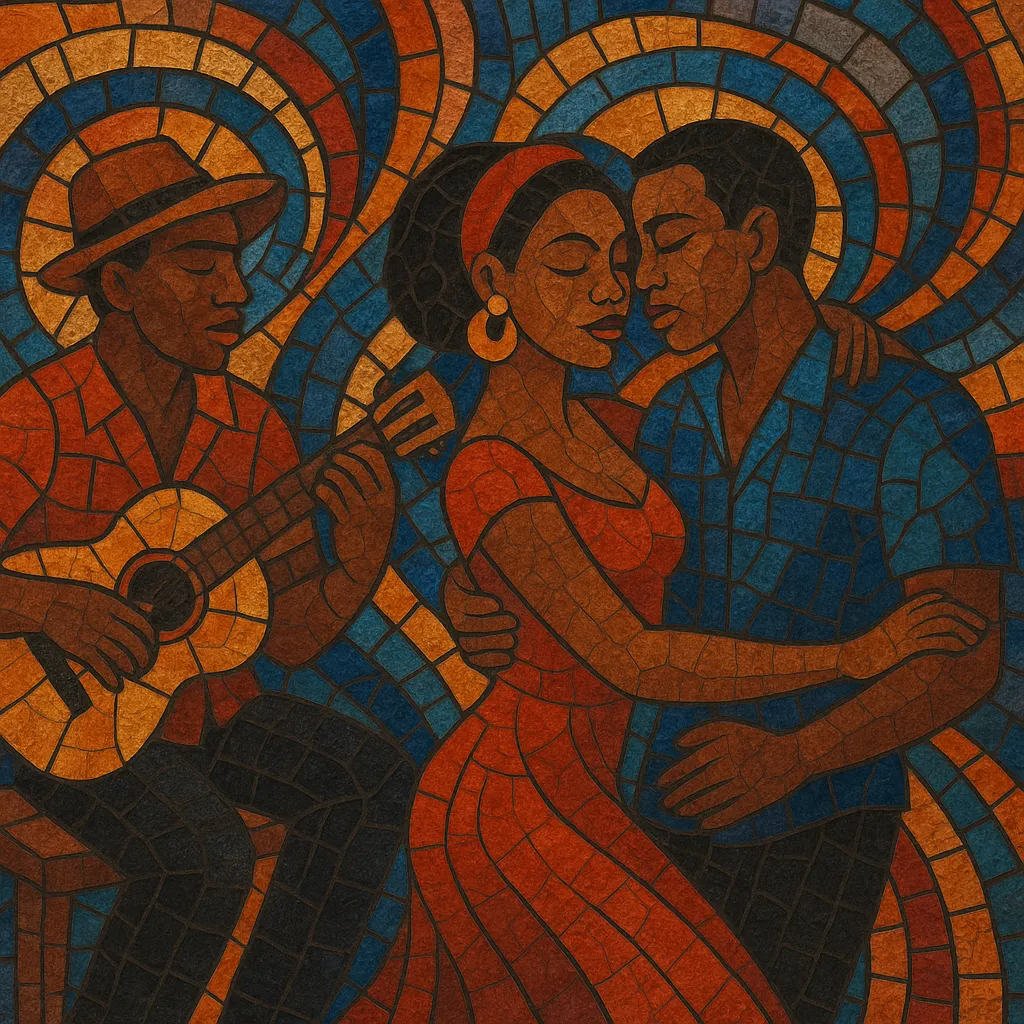Zouk is a dance-focused popular music that emerged in the early 1980s from the French Antilles (Guadeloupe and Martinique), crystallized by the band Kassav'.
It blends Haitian compas, Dominican cadence-lypso, and local drum traditions like gwo ka and bélé with modern disco/funk rhythm sections, glossy synths, horn stabs, and Creole vocals.
Two core tempos/styles developed: the fast, carnival-ready "zouk béton" and the smoother, slower "zouk love" geared toward romantic dancing.
Its tight 4/4 grooves, syncopated guitar/bass licks, and shimmering arrangements helped it spread across the Caribbean, France, Lusophone Africa, and beyond, influencing styles such as kizomba and tarraxinha.
Zouk coalesced in the French Antilles—especially among Guadeloupean and Martinican musicians active in Paris and the Caribbean club circuit. Kassav' synthesized Haitian compas, Dominican cadence-lypso, biguine, gwo ka and bélé drumming, plus disco/funk production and horn writing, into a crisp, electronically enhanced dance music. Studio drum machines and synthesizers sat alongside Antillean rhythmic phrasing and Creole lyrics.
Kassav’ popularized the sound internationally with hits like “Zouk la sé sèl médikaman nou ni” (1984), which showcased the energetic, carnival-ready variant often called “zouk béton.” The group’s touring and recordings established zouk as a pan-Caribbean and European club staple, especially in France and francophone communities.
A slower, smoother branch known as “zouk love” rose to prominence, emphasizing romantic themes, lush harmonies, and sensual dance tempos. In Cape Verde, producers and singers blended zouk aesthetics with coladeira to create “cabo-zouk,” while in Angola and Lusophone Africa, zouk’s rhythmic and textural palette helped shape kizomba and, later, tarraxinha.
Advances in home studios and digital distribution broadened production styles while keeping the core guitar/bass syncopations and polished synth/brass textures. Zouk remains a cornerstone of francophone Caribbean identity, a go-to dance format in diaspora communities, and a key reference for Afro-Lusophone genres, continuing to inform contemporary pop and club music.


